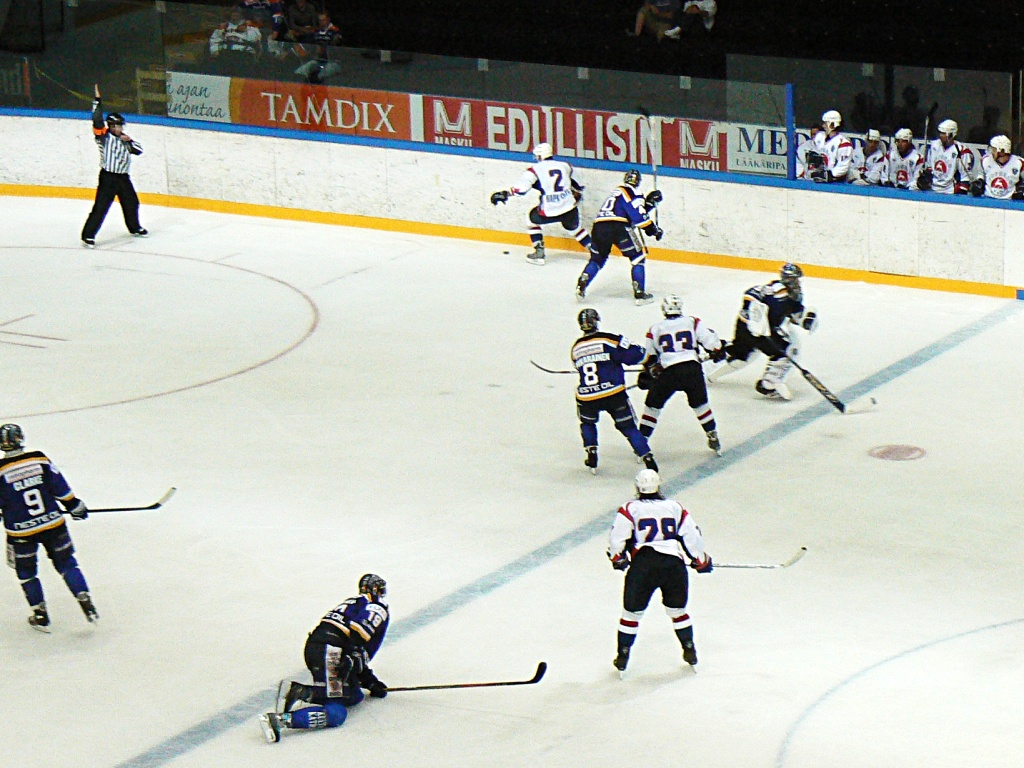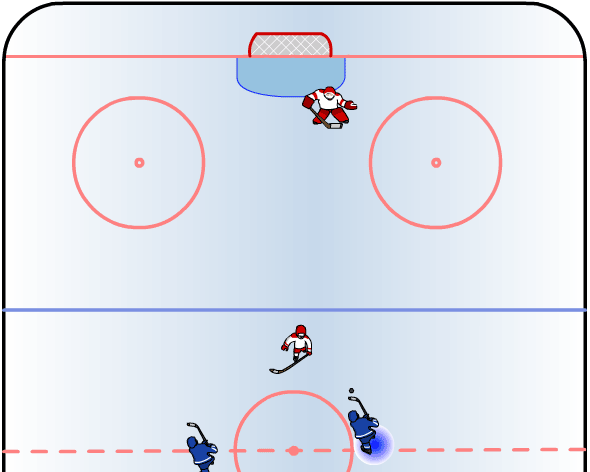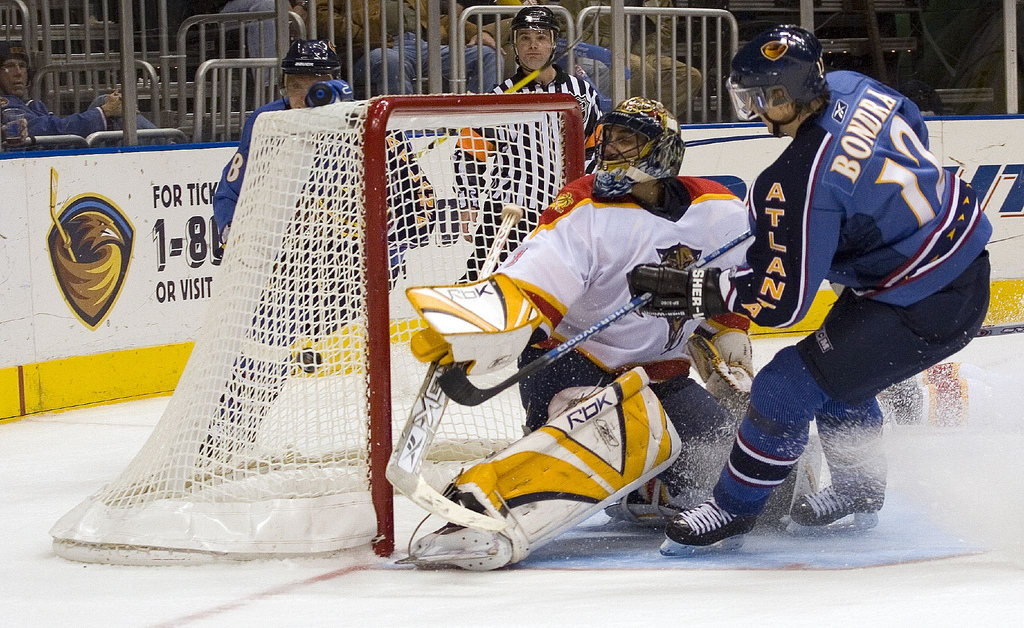|
Viktors Hatuļevs
Viktors Hatuļevs (russian: Ви́ктор Ви́кторович Ха́тулев, ''Viktor Viktorovich Khatulev''; 17 February 1955 – 7 October 1994) was a Soviet Latvian ice hockey defenseman and left winger who played for Dinamo Riga in the Soviet Hockey League. He was the first Soviet player drafted in the National Hockey League (NHL) Amateur Draft but never played for a North American team. Playing career Hatuļevs played for Dinamo Riga in the 1970s. In Latvia, then a part of the USSR, ice hockey was the number one sport. Riga's Dinamo, under Viktor Tikhonov, rocketed into the big league and competed with Moscow teams as an equal. Hatuļevs played in the first World Junior Championships in Leningrad and second World Junior Championships in Winnipeg and Brandon, Manitoba. The two unofficial tournaments helped set the stage for the first official World Juniors in 1977. He was the best player in the World Youth hockey championship in 1974/75, and in 1973/74 he was th ... [...More Info...] [...Related Items...] OR: [Wikipedia] [Google] [Baidu] |
Defenceman (ice Hockey)
Defence or defense (in American English) in ice hockey Ice hockey (or simply hockey) is a team sport played on ice skates, usually on an Ice rink, ice skating rink with Ice hockey rink, lines and markings specific to the sport. It belongs to a family of sports called hockey. In ice hockey, two o ... is a player position that is primarily responsible for preventing the opposing team from scoring. They are often referred to as defencemen, D, D-men or blueliners (the latter a reference to the blue line in ice hockey which represents the boundary of the offensive zone; defencemen generally position themselves along the line to keep the puck in the zone). They were once called cover-point. In regular play, two defencemen complement three Forward (ice hockey), forwards and a goaltender on the ice. Exceptions include Overtime (ice hockey), overtime during the regular season and when a team is Short-handed, shorthanded (i.e. has been assessed a penalty), in which two defenceme ... [...More Info...] [...Related Items...] OR: [Wikipedia] [Google] [Baidu] |
Viktor Tikhonov (ice Hockey, Born 1930)
Viktor Vasilyevich Tikhonov (Russian language, Russian: Виктор Васильевич Тихонов; 4 June 1930 – 24 November 2014) was a Soviet people, Soviet ice hockey player and coach. Tikhonov was a defenceman with VVS Moscow and Dynamo Moscow from 1949 to 1963, winning four national championships. He was the coach of the Soviet Union national ice hockey team, Soviet team when it was the dominant team in the world, winning eight Ice Hockey World Championships, World Championship gold medals, as well as Olympic gold in 1984, 1988, and 1992. Tikhonov also led CSKA Moscow to twelve consecutive league championships. He was named to the IIHF Hall of Fame as a Builder (ice hockey), builder in 1998. Biography Tikhonov played as a defenceman with the VVS Moscow, VVS (Team of the Soviet Air Force) and HC Dynamo Moscow, Dynamo Moscow. He scored 35 goals in 296 games in the Soviet Championship League, Soviet elite hockey league from 1949 to 1963. He also played for the Soviet Un ... [...More Info...] [...Related Items...] OR: [Wikipedia] [Google] [Baidu] |
Soviet Championship League
The Soviet Hockey Championship (russian: Чемпионат СССР по хоккею) was the highest level ice hockey league in the Soviet Union, running from 1946 to 1992. Before the 1940s the game of ice hockey was not cultivated in Russia, instead the more popular form of hockey was bandy. Following the dissolution of the USSR, the league was temporarily renamed the CIS Championship in 1992. This organization was the direct predecessor of the '' International Hockey League'' (russian: Межнациональная хоккейная Лига), and subsequent Russian Superleague (RSL) and current Kontinental Hockey League (KHL). History The Soviet Championship League began in 1946, with 12 teams playing 7 games each. Teams were based in Arkhangelsk, Kaunas, Leningrad, Moscow, Riga, Sverdlovsk, Tallinn and Uzhhorod, and eight of them were from the military or police. The teams were populated with amateur players who were actually full-time athletes hired as regular workers of ... [...More Info...] [...Related Items...] OR: [Wikipedia] [Google] [Baidu] |
1973–74 Soviet League Season
The 1973–74 Soviet Championship League season was the 28th season of the Soviet Championship League, the top level of ice hockey in the Soviet Union. Nine teams participated in the league, and Krylya Sovetov Moscow won the championship. Regular season Relegation * Avtomobilist Sverdlovsk Dinamo-Energija Yekaterinburg (russian: ХК Динамо-Энергия Екатеринбург) was an ice hockey team in Yekaterinburg, Russia. History The club was founded in 1950 as Spartak Sverdlovsk. They played in the top-level leagues in ... – SKA Leningrad 4:7, 2:9 External linksSeasonon hockeystars.ru {{DEFAULTSORT:1973-74 Soviet League season 1973–74 in Soviet ice hockey Soviet League seasons Sov ... [...More Info...] [...Related Items...] OR: [Wikipedia] [Google] [Baidu] |
Penalty (ice Hockey)
A penalty in ice hockey is a punishment for an infringement of the rules. Most penalties are enforced by sending the offending player to a penalty box for a set number of minutes. During the penalty the player may not participate in play. Penalties are called and enforced by the referee, or in some cases, the linesman. The offending team may not replace the player on the ice (although there are some exceptions, such as fighting), leaving them short-handed as opposed to full strength. When the opposing team is said to be on a '' power play'', they will have one more player on the ice than the short-handed team. The short-handed team is said to be "on the penalty kill" until the penalty expires and the penalized player returns to play. While standards vary somewhat between leagues, most leagues recognize several common varieties of penalties, as well as common infractions. The statistic used to track penalties is called "penalty minutes" and abbreviated to "PIM" (spoken as singl ... [...More Info...] [...Related Items...] OR: [Wikipedia] [Google] [Baidu] |
Point (ice Hockey)
In ice hockey, point has three contemporary meanings. Personal stat A point is awarded to a player for each goal scored or assist earned. The total number of goals plus assists equals total points. The Art Ross Trophy is awarded to the National Hockey League (NHL) player who leads the league in scoring points at the end of the regular season. Team stat Points are also awarded to assess standings (or rankings). Historically, teams were awarded two points for each win, one point for each tie and no points for a loss. Such a ranking system, implemented primarily to ensure a tie counted as a "half-win" for each team in the standings, is generally regarded as British and/or European in origin and as such adopted by the National Hockey League which was founded in Canada where leagues generally used ranking systems of British origin. Awarding points in the standings contrasts with traditional American ranking systems favored in sports originating within the United States where today th ... [...More Info...] [...Related Items...] OR: [Wikipedia] [Google] [Baidu] |
Assist (ice Hockey)
In ice hockey, an assist is attributed to up to two players of the scoring team who shot, passed or deflected the puck towards the scoring teammate, or touched it in any other way which enabled the goal, meaning that they were "assisting" in the goal. There can be a maximum of two assists per goal. The assists will be awarded in the order of play, with the last player to pass the puck to the goal scorer getting the primary assist and the player who passed it to the primary assister getting the secondary assist. Players who gain an assist will get one point added to their player statistics. Despite the use of the terms "primary assist" and "secondary assist", neither is worth more than the other, and neither is worth more or less than a goal. Assists and goals are added together on a player's scoresheet to display that player's total points. Special cases If a player scores off a rebound given up by a goaltender, assists are still awarded, as long as there is no re-possession by ... [...More Info...] [...Related Items...] OR: [Wikipedia] [Google] [Baidu] |
Goal (ice Hockey)
In ice hockey, a goal is scored when the puck entirely crosses the goal line between the two goal posts and below the goal crossbar. A goal awards one point to the team attacking the goal scored upon, regardless of which team the player who actually deflected the puck into the goal belongs to (see also own goal). Typically, a player on the team attempting to score shoots the puck with their stick towards the goal net opening, and a player on the opposing team called a goaltender tries to block the shot to prevent a goal from being scored against their team. The term goal may also refer to the structure in which goals are scored. The ice hockey goal is rectangular in shape; the front frame of the goal is made of steel tube painted red (blue in the ECHL because of a sponsorship deal with GEICO) and consists of two vertical goalposts and a horizontal crossbar. A net is attached to the back of the frame to catch pucks that enter the goal and also to prevent pucks from entering it ... [...More Info...] [...Related Items...] OR: [Wikipedia] [Google] [Baidu] |
Season (sports)
In an organized sports league, a typical season is the portion of one year in which regulated games of the sport are in session: for example, in Major League Baseball the season lasts approximately from the last week of March to the last week of September. In other team sports, like association football or basketball, it is generally from August or September to May although in some countries - such as Northern Europe or East Asia - the season starts in the spring and finishes in autumn, mainly due to weather conditions encountered during the winter. A year can often be broken up into several distinct sections (sometimes themselves called seasons). These are: a preseason, a series of exhibition games played for training purposes; a regular season, the main period of the league's competition; the postseason, a playoff tournament played against the league's top teams to determine the league's champion; and the offseason, the time when there is no official competition. Preseason ... [...More Info...] [...Related Items...] OR: [Wikipedia] [Google] [Baidu] |
Playoffs
The playoffs, play-offs, postseason or finals of a sports league are a competition played after the regular season by the top competitors to determine the league champion or a similar accolade. Depending on the league, the playoffs may be either a single game, a series of games, or a tournament, and may use a single-elimination system or one of several other different playoff formats. Playoff, in regard to international fixtures, is to qualify or progress to the next round of a competition or tournament. In team sports in the U.S. and Canada, the vast distances and consequent burdens on cross-country travel have led to regional divisions of teams. Generally, during the regular season, teams play more games in their division than outside it, but the league's best teams might not play against each other in the regular season. Therefore, in the postseason a playoff series is organized. Any group-winning team is eligible to participate, and as playoffs became more popular they ... [...More Info...] [...Related Items...] OR: [Wikipedia] [Google] [Baidu] |
Regular Season
In an organized sports league, a typical season is the portion of one year in which regulated games of the sport Sport pertains to any form of competitive physical activity or game that aims to use, maintain, or improve physical ability and skills while providing enjoyment to participants and, in some cases, entertainment to spectators. Sports can, ... are in session: for example, in Major League Baseball the season lasts approximately from the last week of March to the last week of September. In other team sports, like association football or basketball, it is generally from August or September to May although in some countries - such as Northern Europe or East Asia - the season starts in the spring and finishes in autumn, mainly due to weather conditions encountered during the winter. A year can often be broken up into several distinct sections (sometimes themselves called seasons). These are: a preseason, a series of exhibition games played for training purposes; a r ... [...More Info...] [...Related Items...] OR: [Wikipedia] [Google] [Baidu] |
HC CSKA Moscow
HC CSKA Moscow (1946–present, russian: ЦСКА Москва, Центральный Спортивный Клуб Армии, ''Central Sports Club of the Army, Moscow'') is a Russian professional ice hockey club based in Moscow. The club is a member of the Tarasov Division in the Kontinental Hockey League (KHL). It is referred to in the West as "Central Red Army" or the "Red Army Team" for its past affiliation with the Soviet Army, popularly known as the Red Army. CSKA won more Soviet championships and European cups than any other team in history. It is owned by Russia's largest oil company, Rosneft, which is in turn majority-owned by the Russian government. In addition to nine division titles and record six Continental Cups, CSKA has reached the Gagarin Cup Finals five times, winning in 2019 and 2022. The club also became the first one to win both the Continental Cup and the Gagarin Cup in the same season. In 2018, after more than 50 seasons at the old Ice Palac ... [...More Info...] [...Related Items...] OR: [Wikipedia] [Google] [Baidu] |





